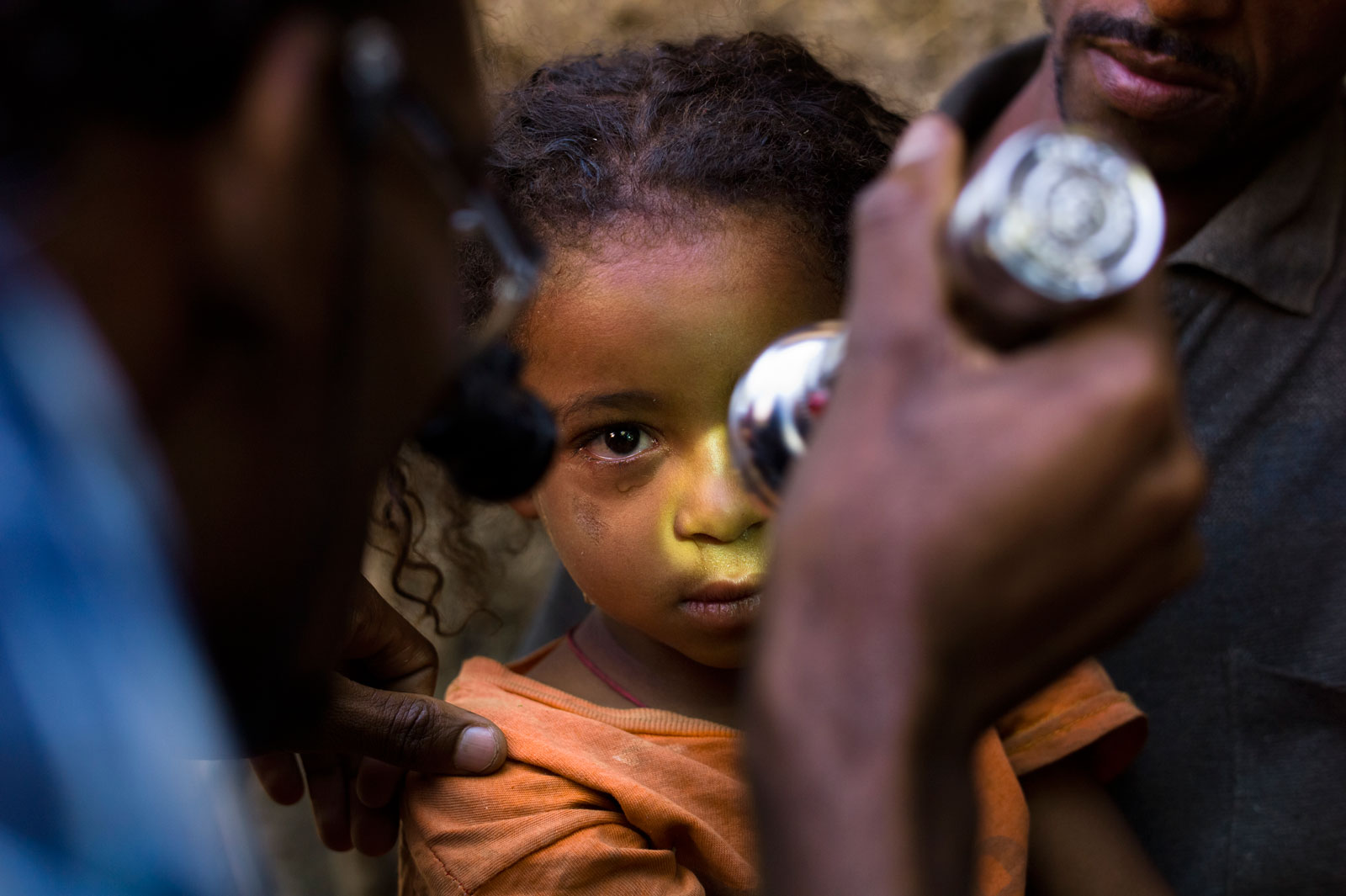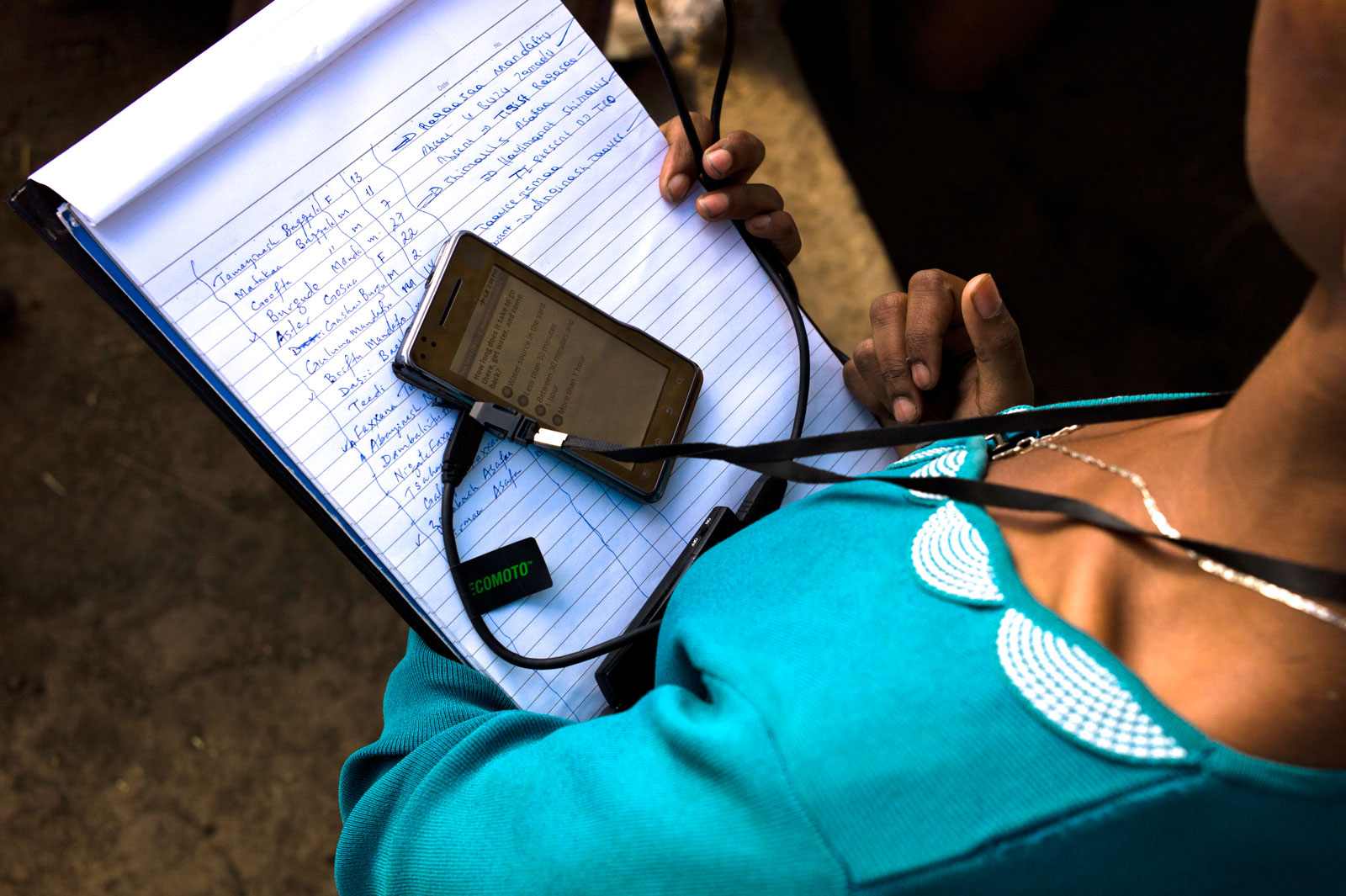Brian Chu is an Associate Program Director with the Neglected Tropical Diseases Support Center (NTD-SC) where he provides managerial, statistical, and technical leadership to multiple operational research projects and monitoring and evaluation efforts. In this guest post, Brian explains how Nafundi has helped NTD-SC collect 50 million data points across 200 projects in 40 countries.
Mobile data collection using ODK has allowed global health staff, scientists, and researchers to rapidly gather and process data in the global effort to control and eliminate neglected tropical diseases (NTDs). NTDs are a group of 17 diseases that cause substantial morbidity and chronic suffering to over 1 billion people in 149 countries worldwide.
 A child in Ethiopia being examined for trachoma, one of many neglected tropical diseases that affects the world's poor. Photo courtesy of Dominic Nahr, Magnum Photos, and Sightsavers.
A child in Ethiopia being examined for trachoma, one of many neglected tropical diseases that affects the world's poor. Photo courtesy of Dominic Nahr, Magnum Photos, and Sightsavers.
NTDs most commonly affect the world's poor through manifestations such as blindness, anemia, stunting, swollen limbs, and skin deformity that perpetuate cycles of poverty and stigma. NTDs were originally coined as 'neglected' due to their low awareness and low-profile funding, but recent years have seen incredible commitments by leading pharmaceutical companies, global health organizations, private foundations, and donor and endemic country governments towards combating NTDs.
The NTD-SC at the Task Force for Global Health is part of this effort to eliminate and control NTDs through operational research initiatives funded primarily by the Bill and Melinda Gates Foundation and USAID. With a plethora of research projects being deployed simultaneously in multiple countries, it made considerable sense for our organization to collect data electronically.
Early NTD-SC (formerly Lymphatic Filariasis Support Center) efforts utilized PDAs but we quickly found them expensive, bulky, unreliable, and the technology had a steep learning curve. A switch was, therefore, made to mobile phones and since 2009, the NTD-SC has worked with Nafundi to incorporate ODK as our primary data collection platform. The ease of setting up and using ODK, along with the flexibility and scalability of the system to provide instantaneous data provided considerable advantages for data speed, security, and accuracy.
ODK has become so indispensable for NTD-SC's global portfolio of projects that we worked with Nafundi to develop a customized branch of ODK called LINKS. LINKS meets specific NTD-SC requirements such as cascading selects and additional language support and navigation options.
 A woman enters survey data into ODK-based LINKS for a trachoma prevalence tracking project. Photo courtesy of Dominic Nahr, Magnum Photos, and Sightsavers.
A woman enters survey data into ODK-based LINKS for a trachoma prevalence tracking project. Photo courtesy of Dominic Nahr, Magnum Photos, and Sightsavers.
LINKS has essentially revolutionized data collection for the NTD-SC and has even spawned LINKS System, a small mHealth department within the organization that services partners in the NTD research community including the World Health Organization, CDC, RTI International, Washington University in St. Louis, University of Georgia, Liverpool School of Tropical Medicine, and many others. The success and inherent benefits of LINKS has also led to NTD-SC supporting mobile data collection for non-NTD organizations such as CARE and Children's Investment Foundation Fund.
LINKS is truly setting new standards and benchmarks for what is possible with mHealth in the global environment. We estimate that the NTD-SC has supported approximately 200 projects in 40 different countries and collected over 50 million data points using the LINKS system. A couple project highlights include:
The NTD-SC has supported several other projects ranging from water and sanitation assessments to vaccine knowledge and practices to mosquito DNA analysis. The flexibility of LINKS to support all types of projects has been truly phenomenal. Moreover, increased use of LINKS in so many countries by so many organizations and local health teams has built great mHealth capacity for future projects.
The NTD-SC is really proud to work with Nafundi and leverage the power of mobile technology and dynamic ODK solutions to tackle NTDs and other global health challenges.
In early 2018, polio virus was detected in the sewers of Mogadishu, Somalia and the government moved quickly to vaccinate the country's children in order to prevent a potential outbreak. A vaccination campaign targeting more than 726,000 children was launched in the Banadir and Lower and Middle Shabelle regions. The campaign was carried out by some 3,500 staffers and Nafundi assisted by enabling real-time tracking of vaccination coverage using ODK. Read more.
Fayaz Jatoi is the Coordinator of the Emergency Operations Centre (EOC) for Polio Eradication in Sindh, Pakistan. In this guest post, Fayaz describes why AFP surveillance is critical to polio eradication and how an SMS-based reporting system for private care provider helps. Read more.
This position has been filled. Thanks to everyone who applied! Read more.